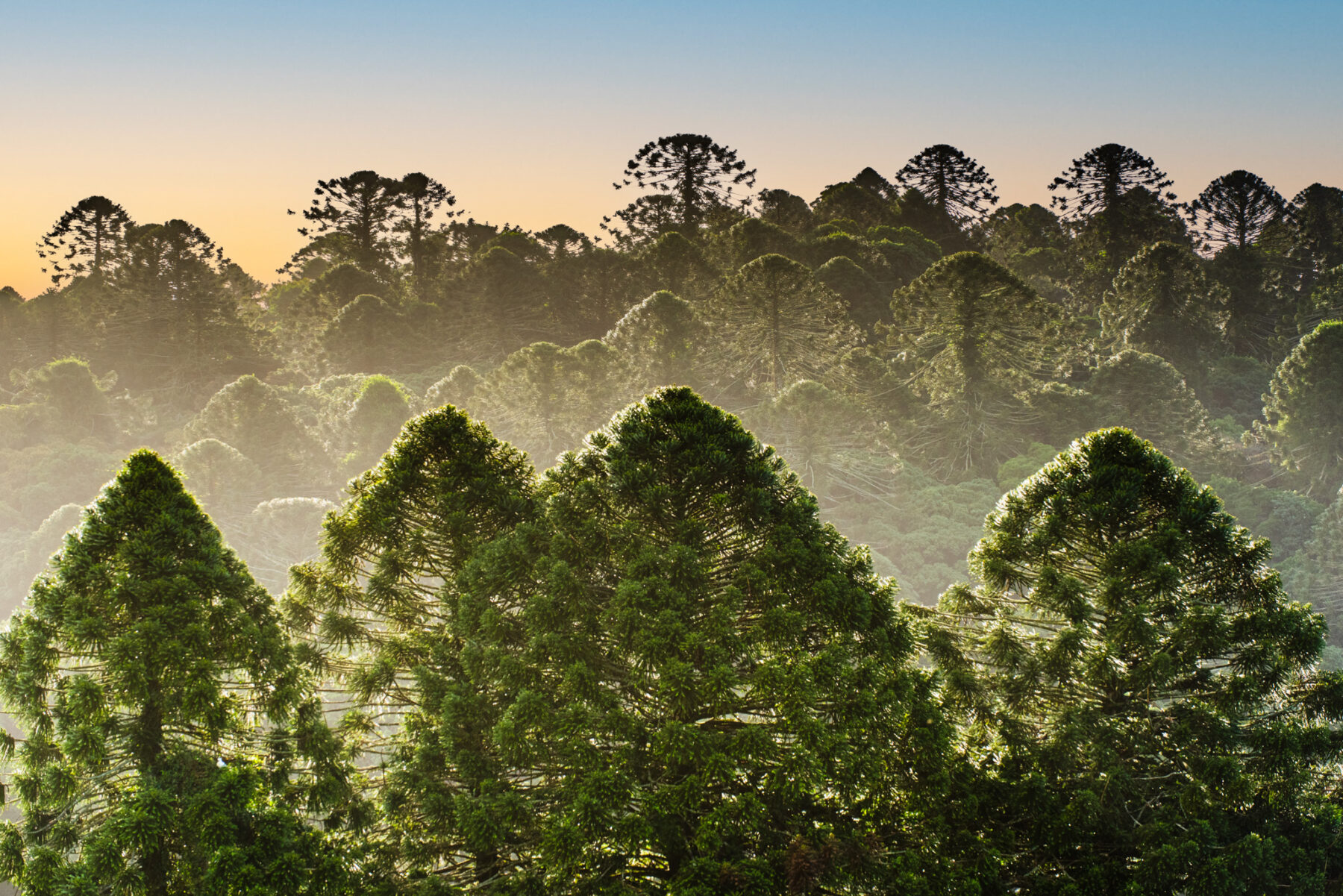One Sunday morning, during morning tea with my local Landcare group, I announced: “I have a special treat for you today – bunya nut crepes!” Everyone froze, wary I was about to poison them. Like many Australians, they believed native seeds and nuts were toxic, requiring extensive leaching and processing before becoming safe to eat.
As I poured the batter, I explained these crepes were made with nothing more than water and flour – bunya flour, which I had made from scratch. Their cautious expressions turned to surprise as they nibbled the edges. They began taking bigger bites, and finally declared them “very good” and even “amazing”.
That was years ago, on the Central Coast of New South Wales. Those baking experiments made me believe bunya was a flour of the future. So when I moved to Queensland’s Sunshine Coast three years ago and found myself in bunya heartland, my interest in these native nuts was revived. I was surprised to learn that bunya, or bonyi-bonyi as it is known to the Gubbi Gubbi people of South East Queensland, is so much more than food.
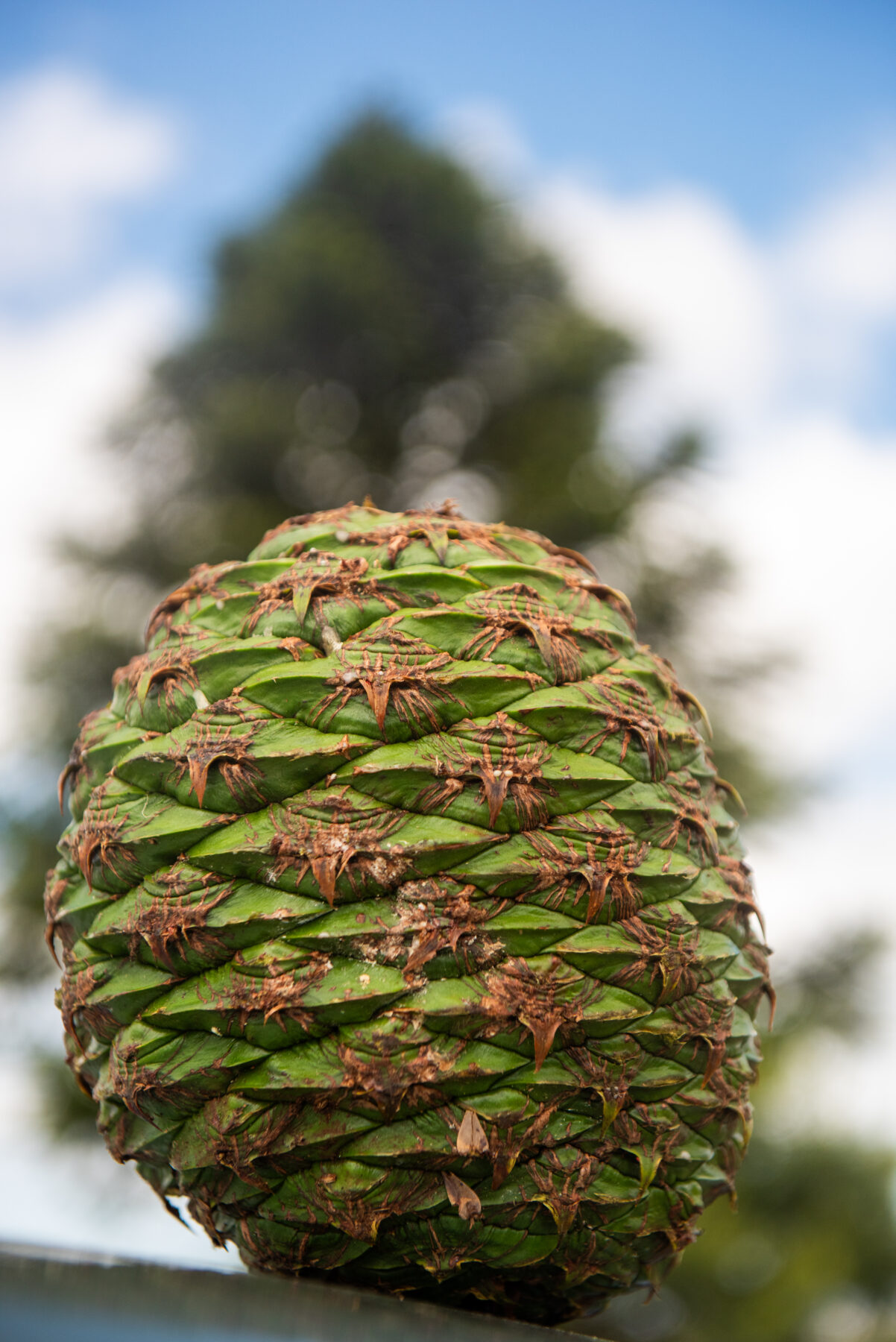
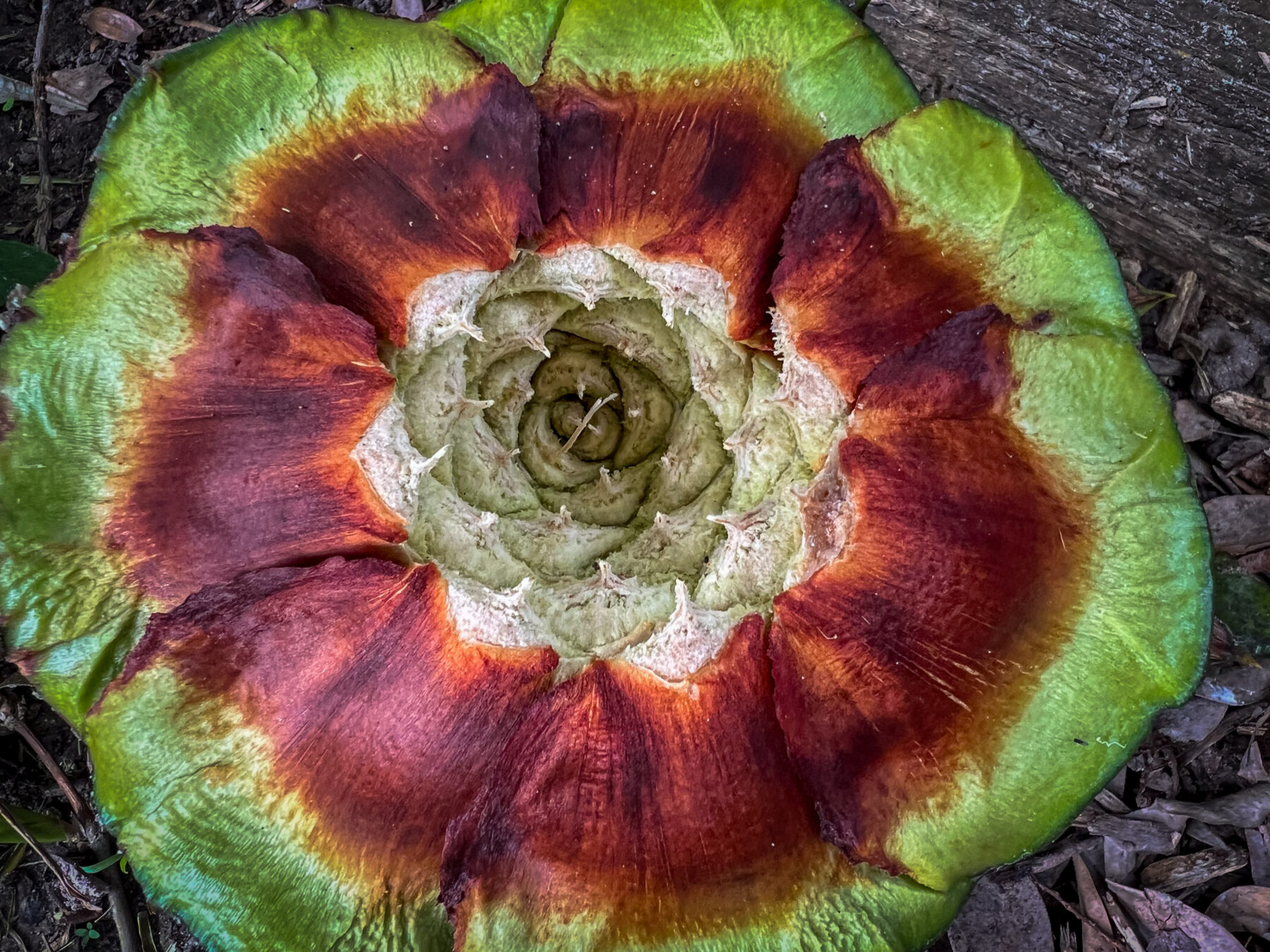
even the largest bowling ball; Fallen cones may break apart on impact exposing their large, edible nuts.
The bunya pine (Araucaria bidwillii) dates back some 200 million years to the Jurassic period, the golden age of dinosaurs. It formed part of an alien landscape of non-flowering plants such as cycads, palms, conifers and ferns. During that period, the Pangaea supercontinent began to break apart. The bunya family, which was once widespread, eventually became more concentrated in the southern supercontinent Gondwana. There, it continued to feed enormous herbivorous sauropods that tossed massive cones down their gullets – whole!
Today 41 species of the Araucariaceae family are scattered across the Southern Hemisphere in Australia, South America, New Zealand, New Guinea, Norfolk Island and New Caledonia. They include the grand New Zealand kauri pine (Agathis australis), the mountain-loving monkey puzzle (Araucaria araucana), Norfolk Island pine (Araucaria heterophylla), Wollemi pine (Wollemia nobilis) and others. Only three species produce nuts that are edible by humans and Australia, Brazil and Chile are those countries lucky enough to be their homes.
Prehistoric pines
As you drive along the Blackall Range in the Sunshine Coast hinterland, the bunya trees are easy to spot by their egg-shaped tops rising above the eucalypts. But even taller ones grow in the Bunya Mountains National Park, a three-hour drive west of my home.
I arrive at Bunya Mountains NP late in the day. A thick mist hangs in the still air. At ground level, the trunks of giant bunyas are imposing and make me feel small. They look like the wrinkled, saggy skin of an old bull elephant – or maybe the lower leg of Australotitan cooperensis, Australia’s largest dinosaur. I cannot see the treetops, only whorls of spiralling branches disappearing 40m above. At the base of trunks lie branches, leaves and cones, their surfaces covered in vicious spikes. I feel as though I’m in an other-worldly landscape of prehistoric holdovers.
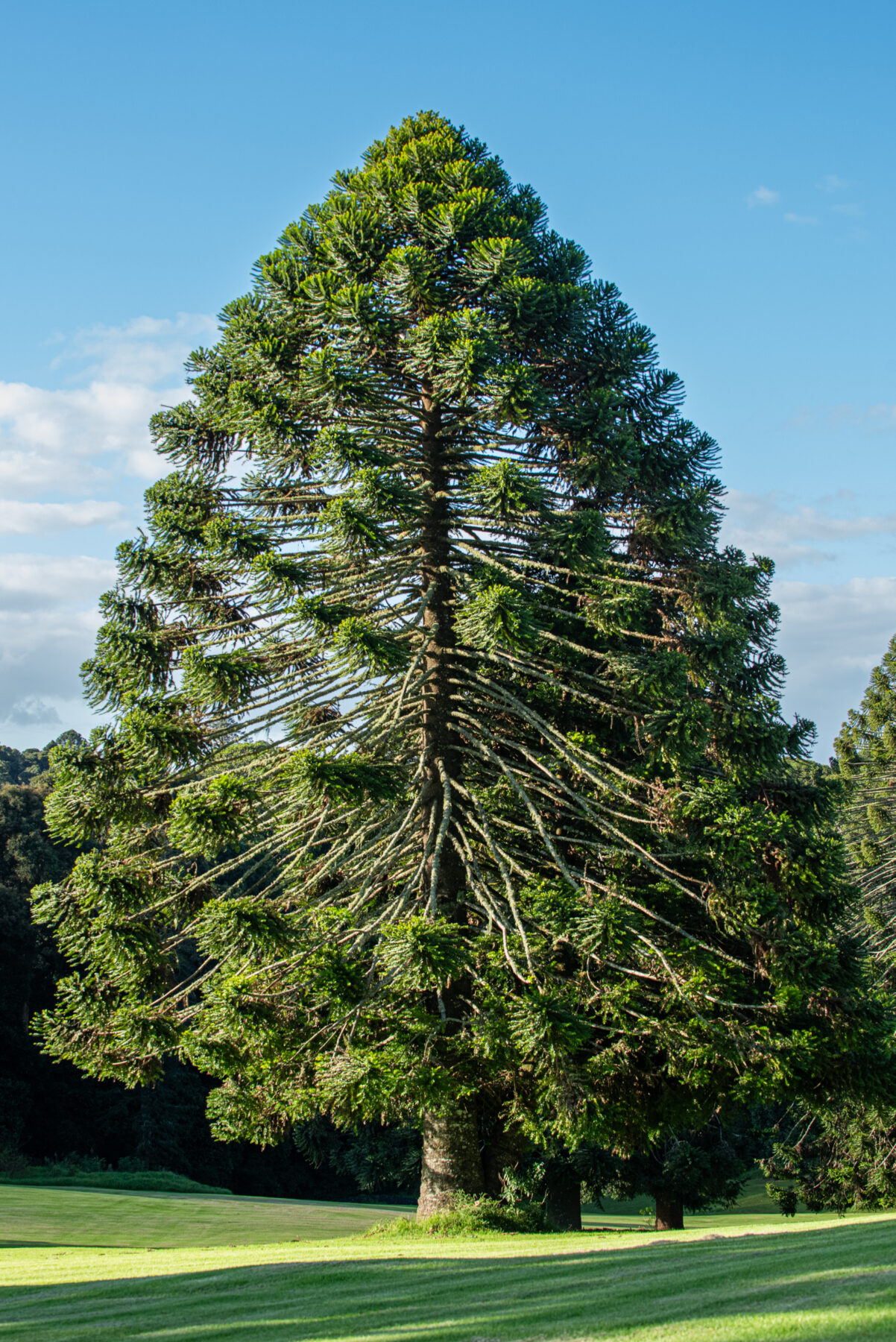
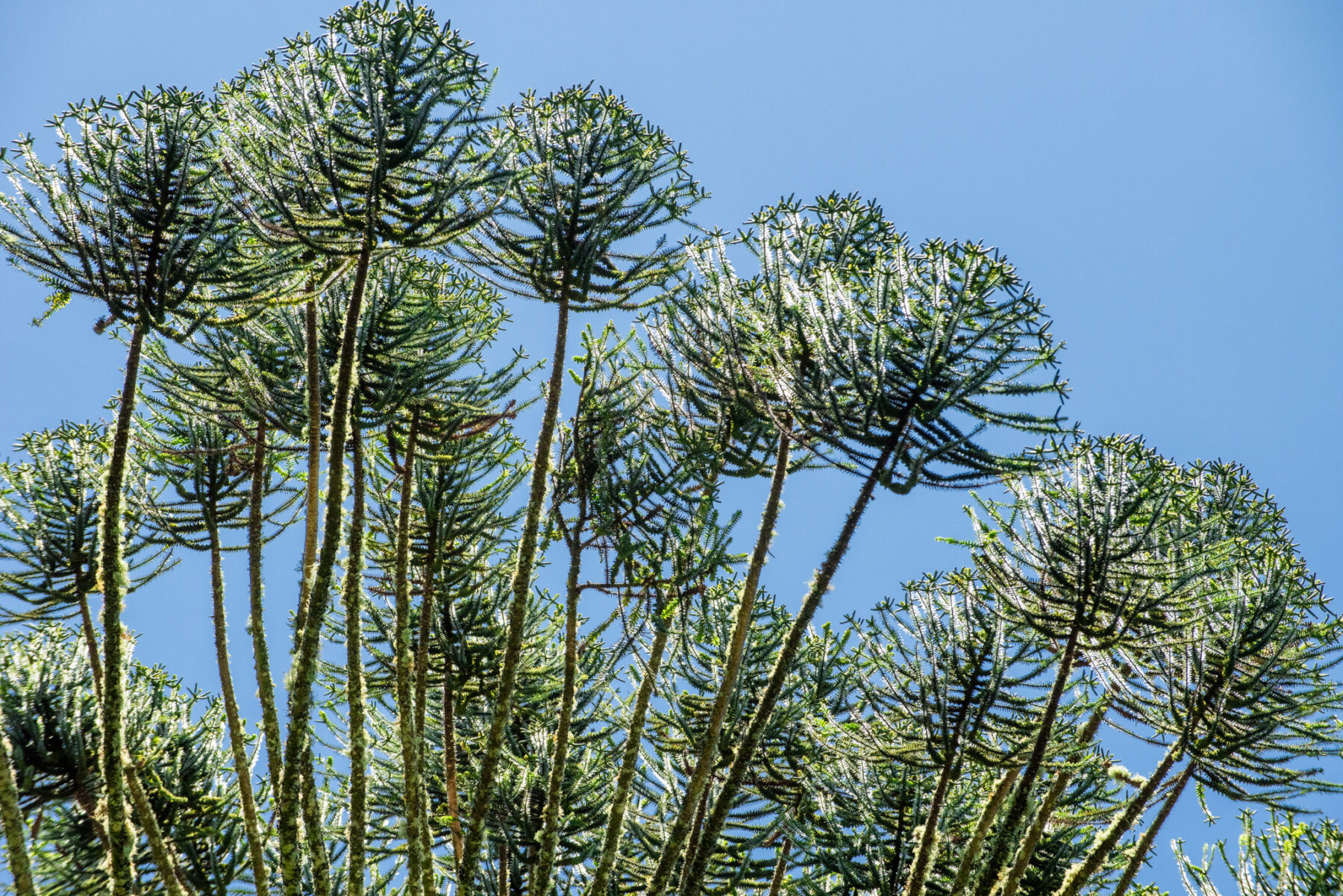
branchlets densely covered in sharppointed leaves; Normally the giant female cones are hidden in the tufts of leaves at the ends of the topmost branches of bunya pines, but by March they have all dropped and the male pollen cones start to grow on the tips, maturing around November.
It’s early March and huge 8kg cones are falling from the trees. The sounds are loud and scary, especially in a forest this dark and dense. I hear a series of rustles and then an explosive bang, followed by a crash as loud as a sauropod’s footsteps. After recovering my wits, I realise a cone had come loose, tearing down branches before hitting the ground. In the tourist areas of these mountains, trees are cordoned off with cyclone fencing and danger signs. But there’s never been a reported death from a striking cone.
Outside the national park are privately owned areas where I can legally collect cones. I roll a few into shopping bags (it’s hard to pick them up without drawing blood) and head back to the Sunshine Coast to try out some new recipes.
Superfood
The bunya pine is endemic to South East Queensland, and locals want to make use of this freely available and tasty food source. Facebook groups are active in exchanging tips, devising new shucking and processing methods, and creating recipes ranging from cakes to flamboyant cocktails. The upswell of interest in this unique conifer shows its promise, but naturally also raises important questions: just how nutritious is it? And can it be substituted for existing foods?
With a PhD in chemical engineering and a master’s degree in food science and technology, Dr Jaqueline Moura Nadolny from The University of Queensland (UQ) is the perfect person to analyse the properties of our bunya nut. She’s from Curitiba in Southern Brazil, whose Guarani name means ‘city with lots of pine nuts’. For centuries, indigenous tribes there have been relying on their own version of bunya – pinhão nuts from the Paraná pine. Today, Brazilians routinely buy pinhão products and snack on them like popcorn while watching TV. “I got really motivated because I could apply a lot of things from there to here,” Jaqui says.
Jaqui has invited me to visit her UQ lab at Indooroopilly in Brisbane to taste one of her many experiments: bunya bread. The lab smells wonderful, like a bakery at dawn. Today she’s preparing doughs from three different bunya flour blends: one from blanched raw nuts, one from fermented nuts, and one from toasted nuts with the skin still on. To lighten the dough, Jaqui adds rice flour, salt, yeast and oil. Each of the three doughs has an evaluation form that asks questions about aroma, flavour, moistness and other attributes. Naturally I don’t bother with the forms but wolf down my slices, declaring, “I like toasted the best.”
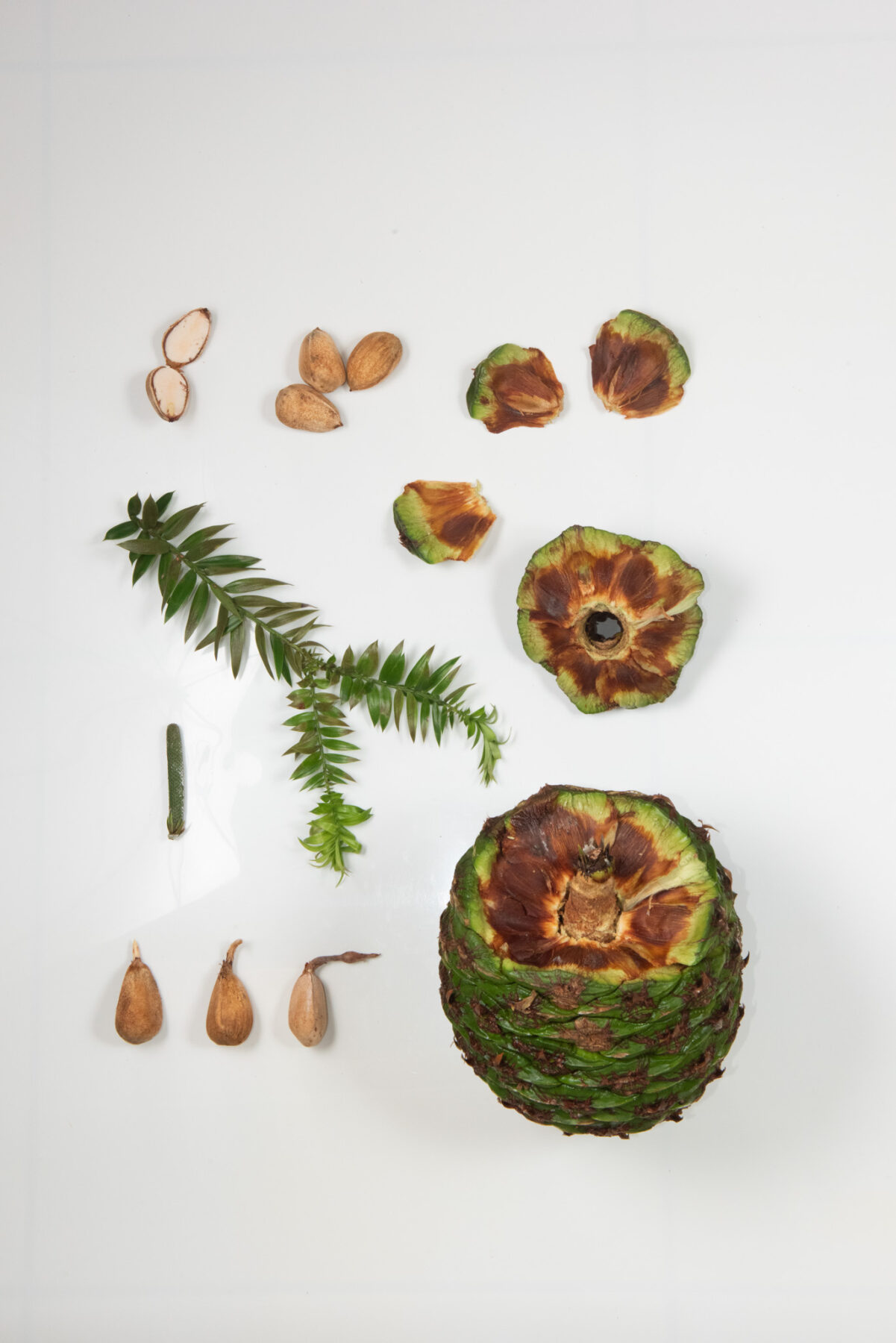
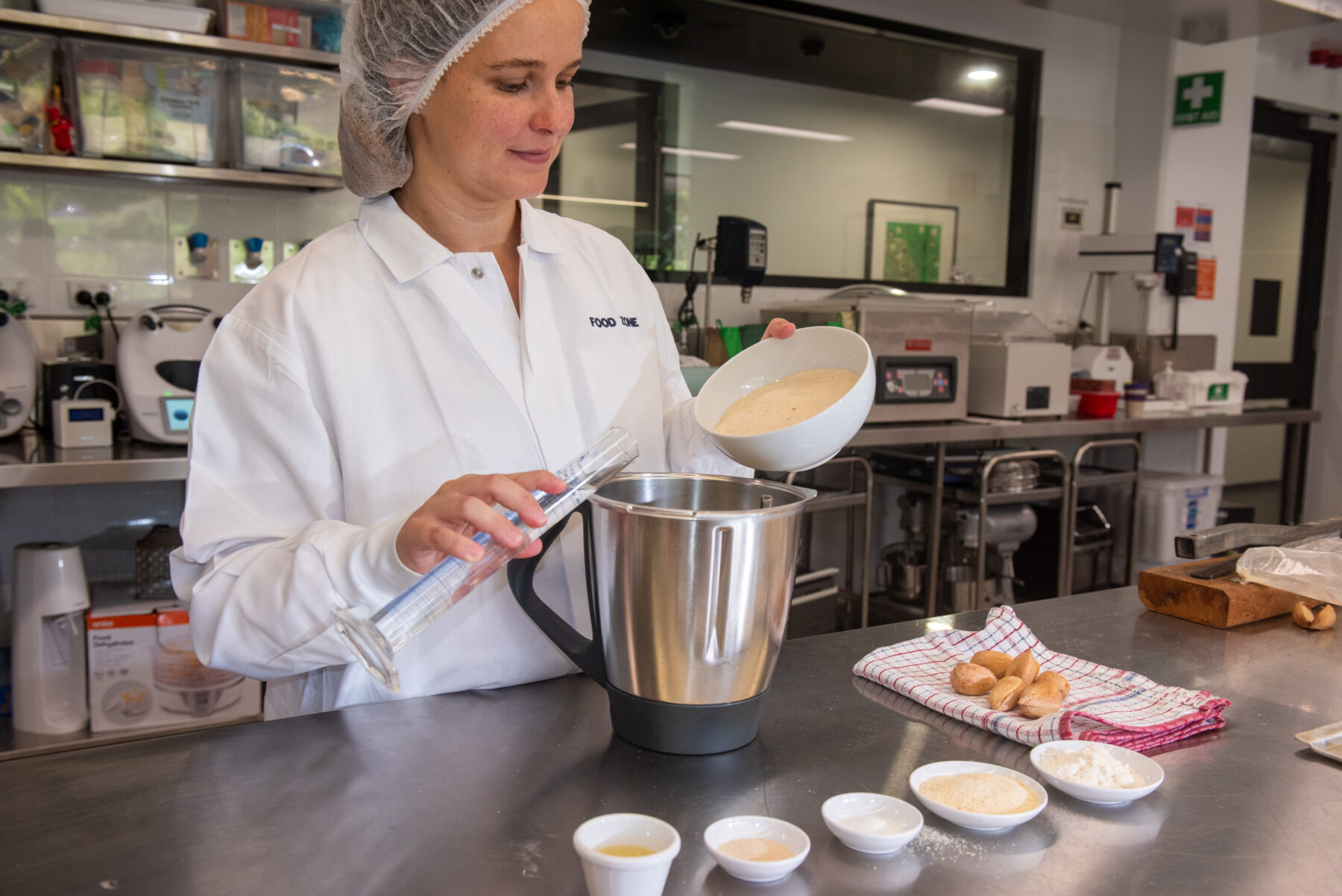
Jaqui’s nutritional analysis of the dried nut reveals it’s 4.7 per cent protein, 4.4 per cent fat and 70 per cent starch. But I’m most surprised by the quality of these macronutrients. Bunya nuts contain all nine of the essential amino acids, making them one of the few nuts to provide a complete protein. They’re rich in omega-3 and omega-6 polyunsaturated fatty acids. And the starch has a low glycaemic index, or GI, meaning it could reduce the risk of diabetes, obesity, cardiovascular diseases and colon cancer.
The inner coating, or skin around the kernel, is high in phenolics, which Jaqui says may “prevent cancer because they’re high in antioxidants”. This has encouraged her to include the inner coating when milling the dried bunya nuts into flour. “The high fibre improves the antioxidant effect,” she says. “It’s really hard to find anything that has dietary fibre and antioxidants together.”
Jaqui has also tested shelf life, grinding and other processes required to turn bunya nuts into commercial products. “In Brazil there is mechanised flour production, and products ranging from pickled nuts [to] even beer,” she says. She believes this information is transferable to Australian bunya because of the similarities between the two species.
It’s clear that for health and commercial purposes, the bunya nut is a winner. It has a long shelf life, acts as a preservative, improves gluten-free flour blends and has the rare property of combining high fibre with disease-preventing phenolics. And Jaqui stresses another reason for developing bunyas. “They are a high-value local food and it benefits Indigenous communities,” she says. “[These communities] have the knowledge of how to harvest. They could be responsible for this chain. Plus, they have the rights to distribute.”
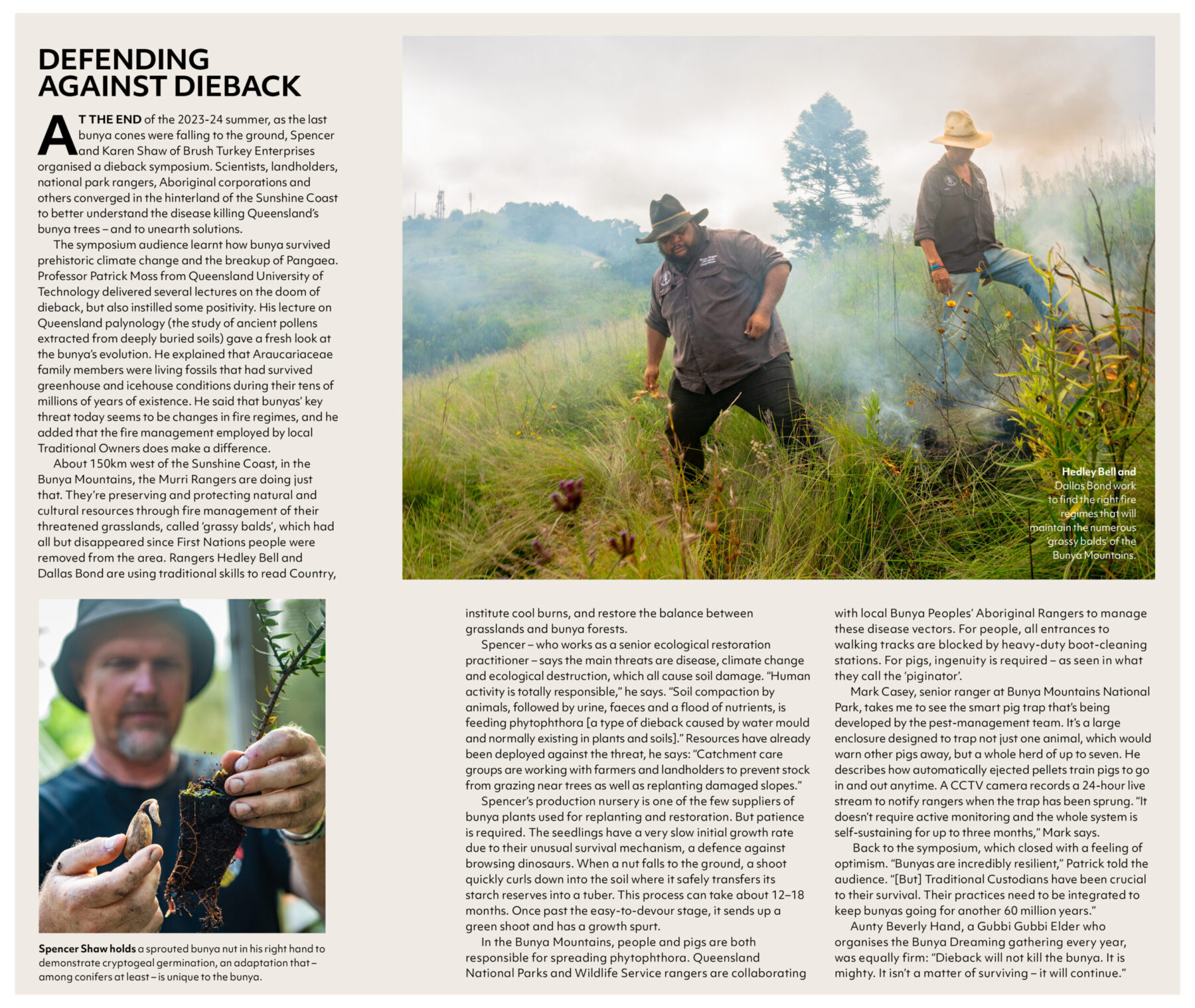
Bunya revival
One person who comfortably straddles the age-old ways of her First Nations ancestors and the modern era of foodie trends is Aunty Dale Chapman. She’s a Yuwaalaraay Kooma woman from Dirranbandi, Queensland, who moved to Gubbi Gubbi country on the Sunshine Coast in 1976. Her conventional chef training was expanded in Nice, France, and she brought back these culinary experiences to top restaurants in Australia. She was the first Indigenous Australian to attend the Slow Food Conference in Turin, Italy, as a delegate. She’s a member of the Queensland Indigenous Chamber of Commerce and Slow Food International, and an Adjunct Senior Fellow in the School of Agriculture and Food Sciences at UQ.
Dale invites me to My Dilly Bag, her shop in Forest Glen, for “a cook-up” with bunya nuts. “We’re going to cook them three ways,” she says as she cuts several fresh nuts in half. First is boiling them, which is the most common way to prepare them. “It absorbs flavour so well,” she says. “In the old days they’d get bully beef, cook him off, take him out and throw in all the veggies or else throw in the bunya nuts – same pot of water. They take on the flavour of the silverside, like a potato.” I nibble on one and find it pleasant, reminding me of the hot chestnuts my mother cooked in my childhood.
Second, she takes a portion of the cooked nuts and grinds them in a food processor until they look like couscous. Then she whizzes them into a smooth paste, adding some “very expensive” native bee honey. It tastes divine, again reminiscent of sweet chestnut pudding (another childhood favourite).
Third, she takes another portion of boiled nuts, slices them a bit thinner and tosses them in a frying pan with garlic and a native flavoured oil she sells at her shop. It’s fantastic – pure restaurant quality – but she’s not finished yet. She dumps the remaining toasted nuts into a food processor, adds cooked native Warrigal greens and garlic, whizzes them to a chunky paste, and voila – pesto! It tastes similar to regular pesto; maybe that’s why it’s a favourite at any local festival where bunya is featured.
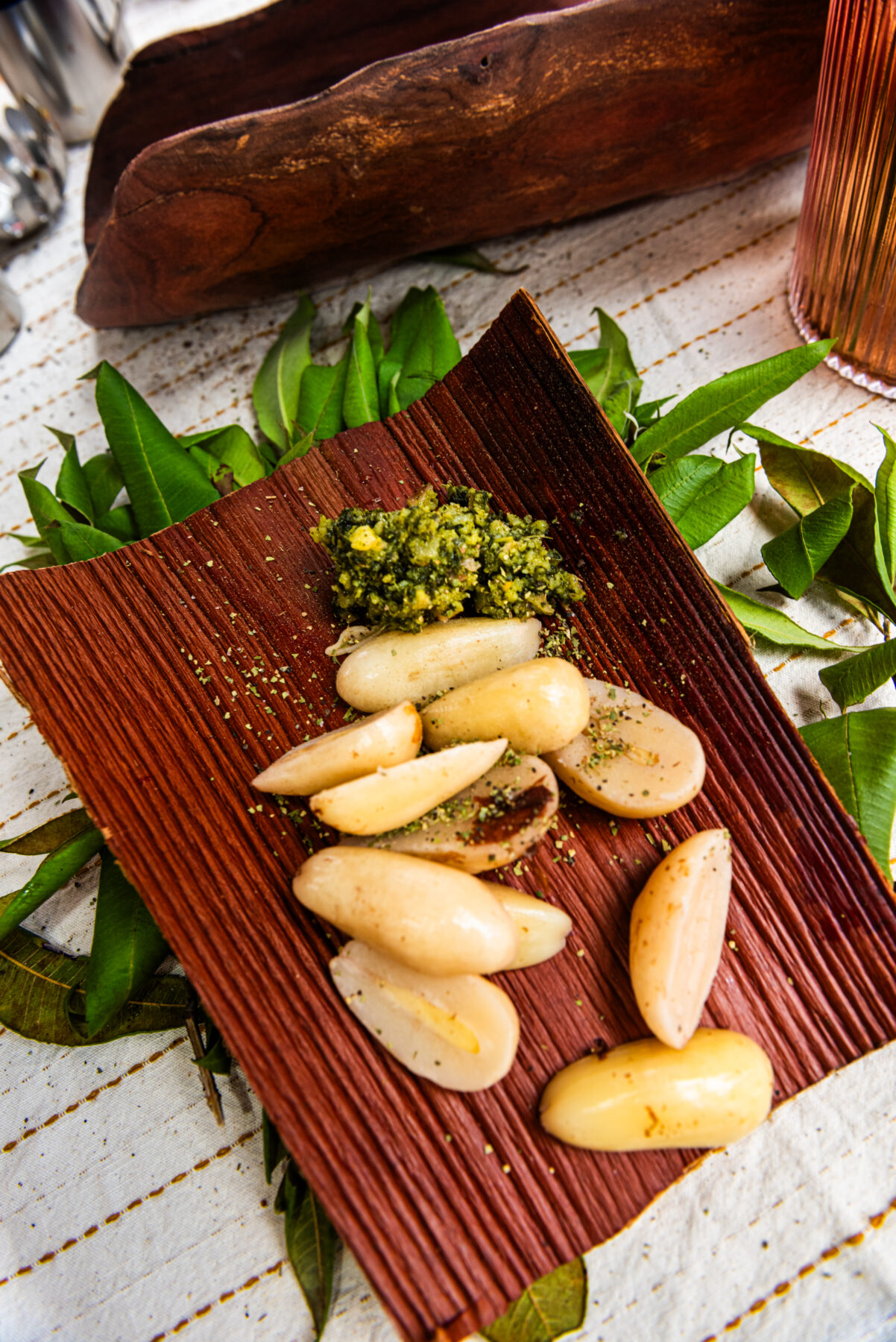
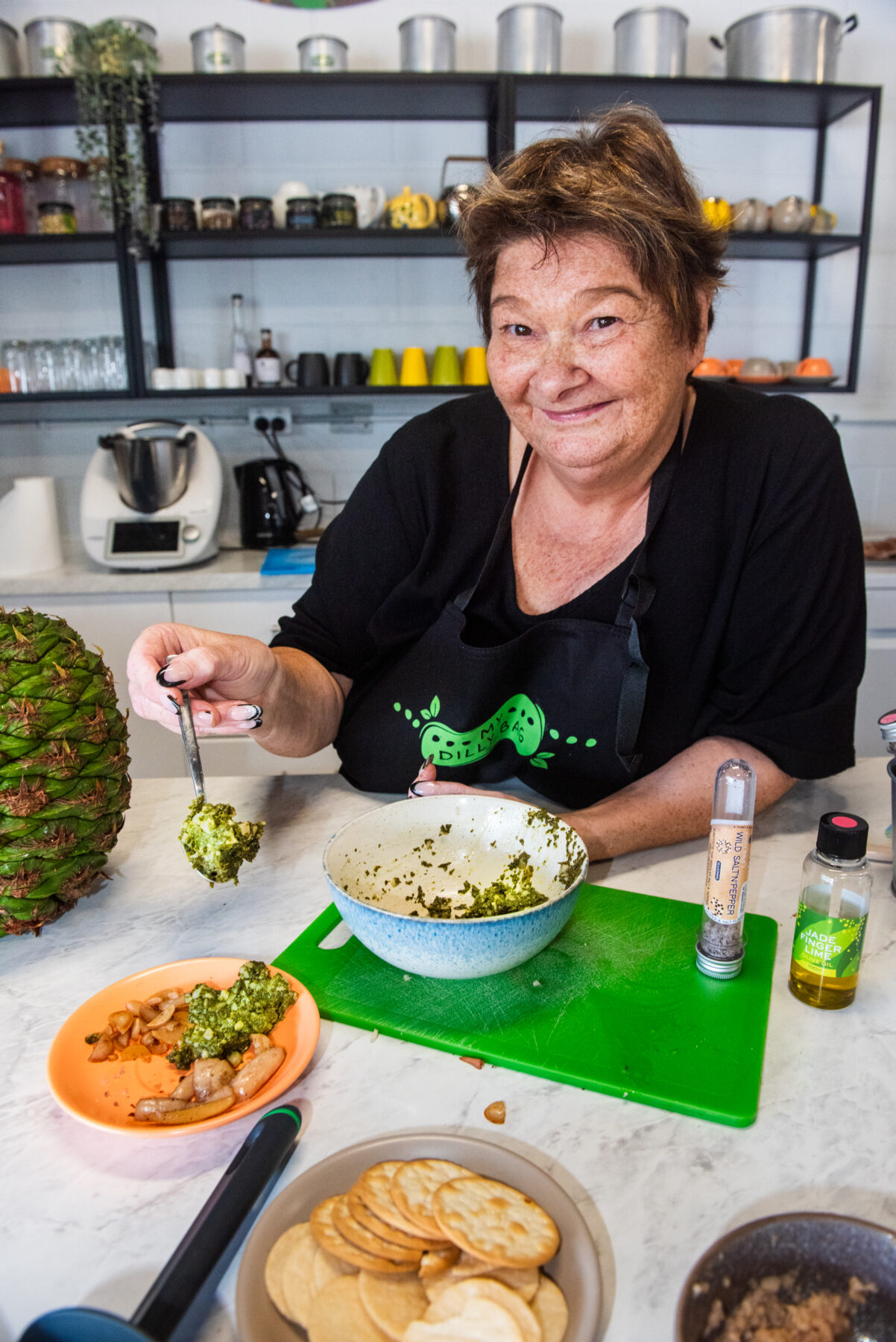
Afterwards, we sit at one of her cafe tables and she tells me about her 20-plus years in the bush food industry. “I’ve lived here 50 years on Gubbi Gubbi country,” she says. “I was a pioneer in this industry 24 years ago. No one was doing bush foods then. Because of social media in the last five years, more people are into this wonderful experience of foraging and harvesting. Because bunya is a Queensland-only product, that makes it unique as a bush food.”
I remark that her branding looks so professional, and she explains she quickly learnt to take advice from business experts. She encourages young entrepreneurs to adopt the same attitude. “Don’t think you’re the only person in the room,” she says. “Surround yourself with people with different skill sets, and then you can grow. It allowed me to go overseas [to] France, Italy – building up my knowledge. When I came back there were TV, magazines, people wanting [to interview] me.”
Dale focuses on education and regularly delivers school programs for children in kindergarten through to high school. “If we can teach little babies here’s our bush food, what it’s like, they’ll always remember that,” she says. “Indigenous businesses stay in business longer than others. It’s our love to keep culture alive. Us fellas, we just keep going.”
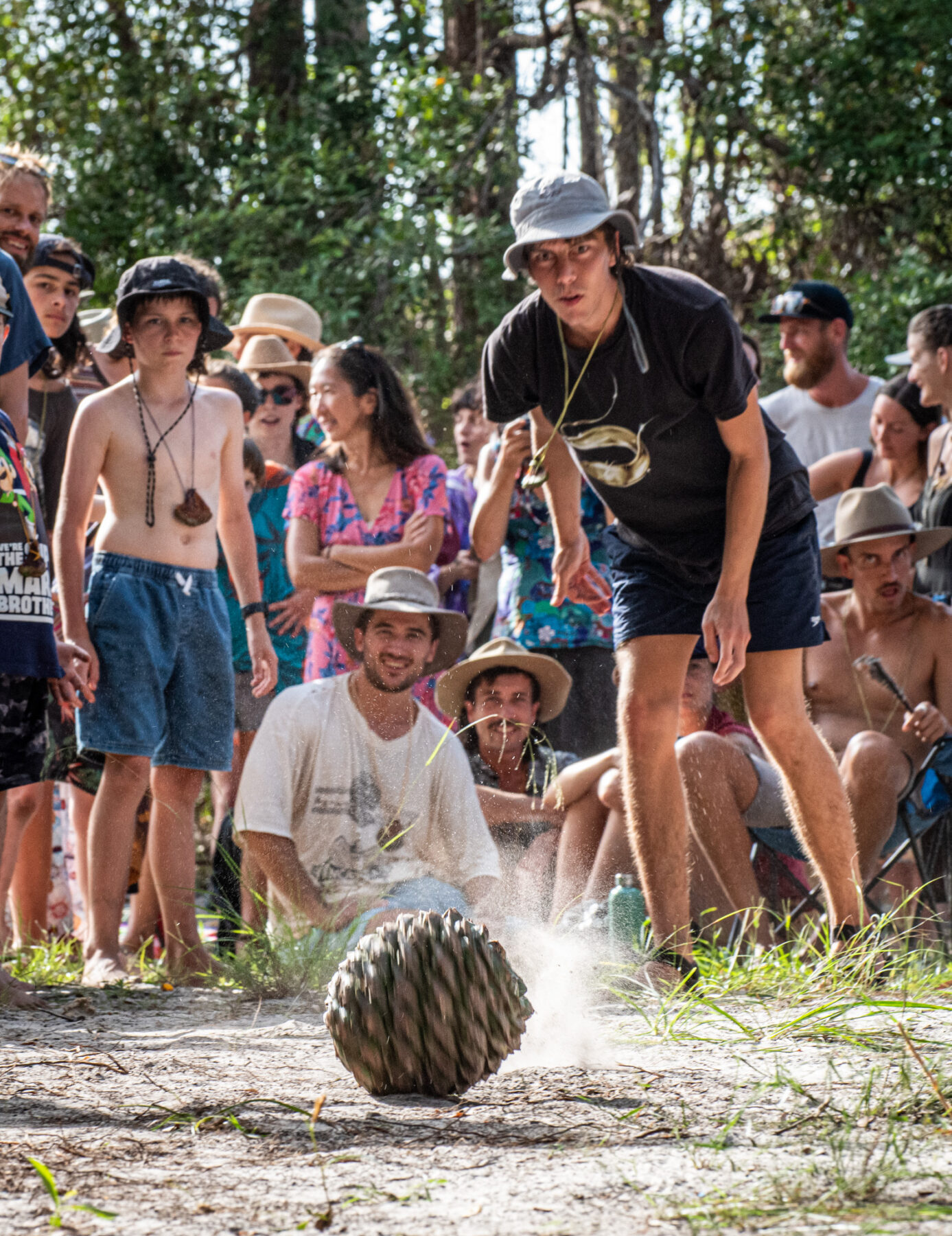
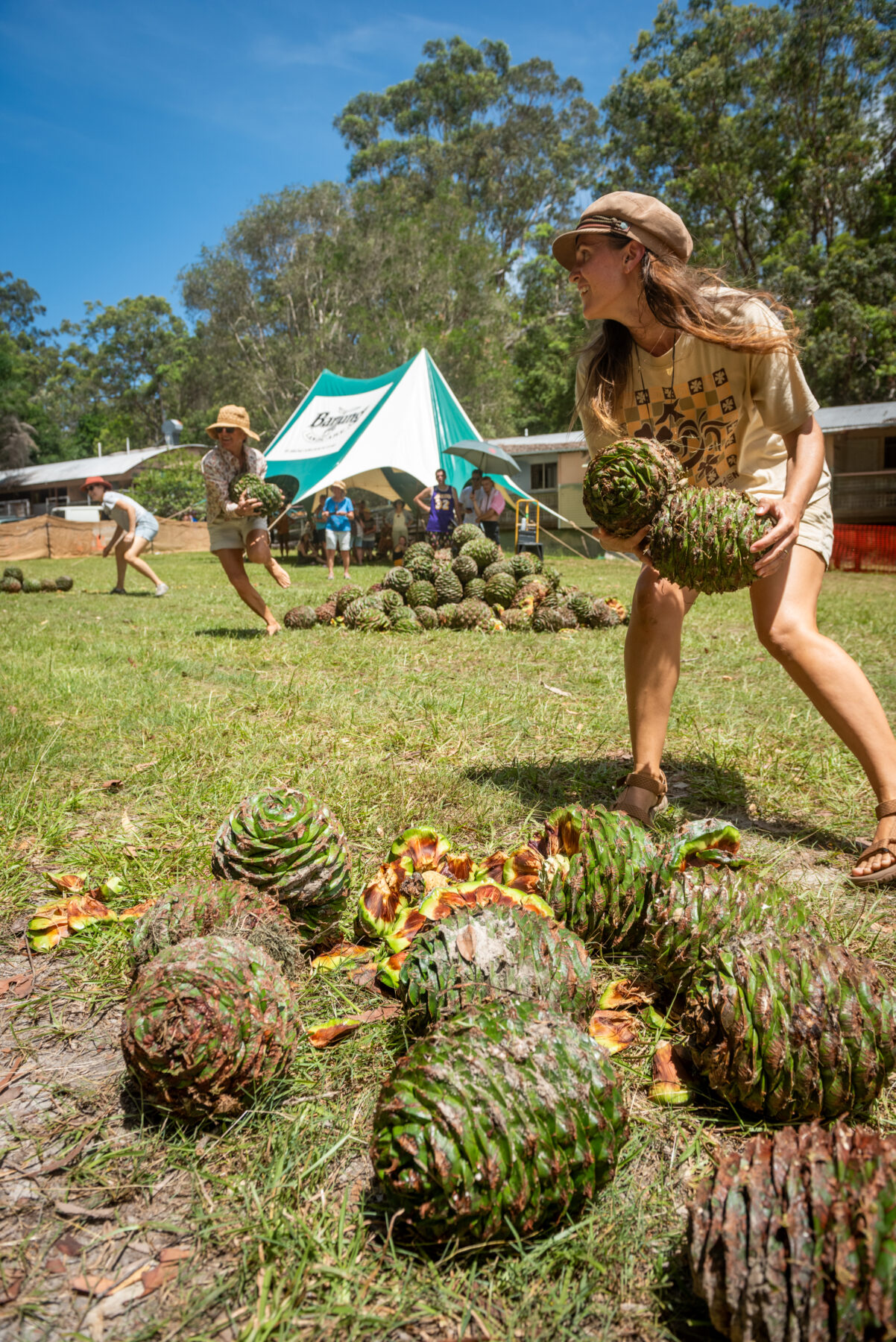
I ask her if she thinks bunya has big potential as a commercial product. “It has so much potential!” she exclaims. “It has so many applications – you’ve seen what we can do. But the key is an automated cutting machine and the mobilisation of First Nations people to build the industry. We need to assemble the knowledge – how we harvest it, when to go out. Start getting people ready for the industry.”
With this degree of energy and passion, a new economy based on bunya could be well underway. “It will provide First Nations [people] with the continuous cultural connection to the plant, their ancestors, and the practices of looking after Country,” Dale says. “We do have to maintain the sustainability of the plant, which is exactly what the mob used to do. They take some away in dillybags and a tree would pop up in that part of the country. We can help our kids with their future and all Australians to benefit in the wealth of knowledge and great value of First Nations culture and practices.”
To revive bunya as a modern food is to revive everything – the tree, the land and the culture. I see bunya, or bonyi-bonyi, as a vehicle for reconciliation. South East Queensland is rich in active First Nations artists, musicians, horticulturalists, revivalists, activists, healers and historians. They’re out there every day, dispensing their knowledge, sharing their culture, and advocating. Events such as the annual Bunya Dreaming, held every second January, and the construction of the new Bunya Bush University in the Bunya Mountains, are drawing non-Indigenous crowds eager to learn from the wealth of First Nations cultural knowledge. Having been torn apart, black and white cultures now want to work together and bring a valuable product to market.
